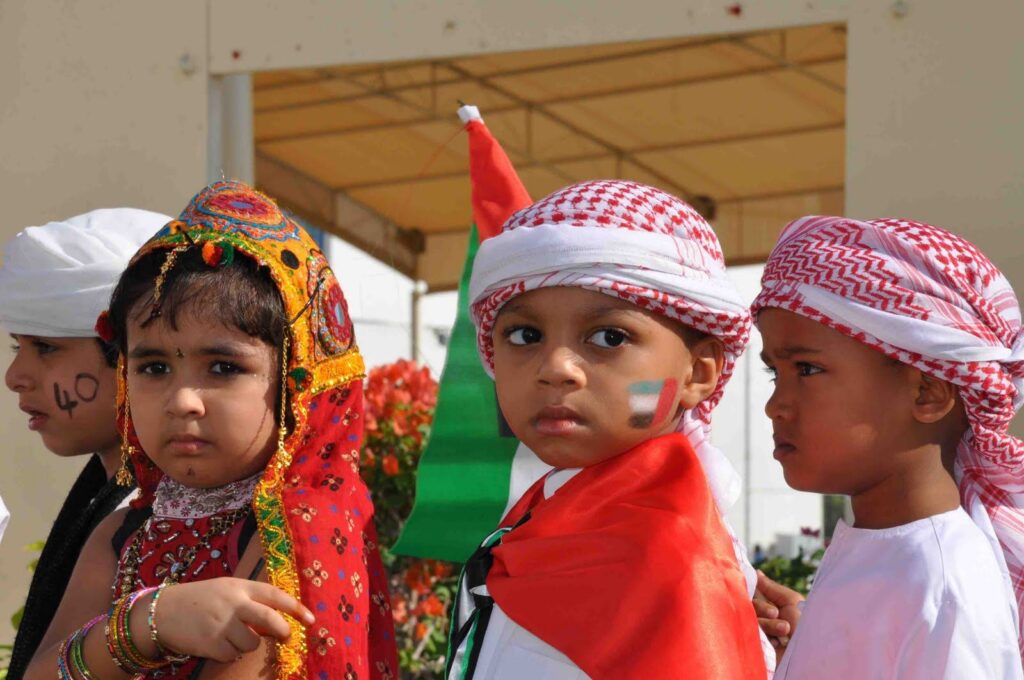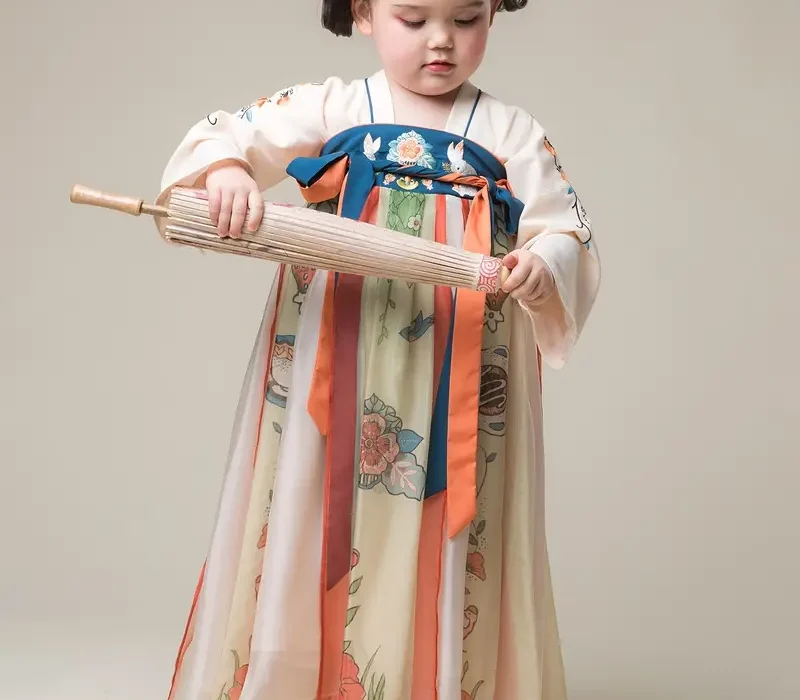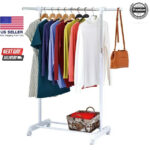Traditional Emirati kids’ clothes reflect the rich culture and heritage of the UAE. These garments are not just clothing; they tell a story about identity and tradition.
In this guide, you will explore the beautiful styles that Emirati children wear. From vibrant colors to intricate designs, these outfits hold a special place in Emirati culture. Each piece often features unique embroidery and patterns, making them stand out.
Understanding these traditional clothes helps you appreciate the culture more deeply. Whether it’s for a special occasion or daily wear, Emirati kids’ clothes showcase both history and modern influences. Dive into this guide and discover the charm of traditional Emirati attire for children.
Table of Contents

Credit: www.temu.com
Emirati Cultural Attire For Children
Emirati cultural attire for children reflects the rich heritage of the UAE. Traditional clothing is more than just fabric. It tells stories of history and values. Parents often dress their children in traditional wear to instill pride and identity. Understanding these clothes helps us appreciate Emirati culture.
Significance Of Traditional Dress
Traditional dress holds great importance in Emirati culture. It symbolizes family ties, respect, and community. Here are some key points:
- Identity: Clothing helps children connect with their culture.
- Tradition: Wearing traditional clothes honors family history.
- Occasions: Special events often require traditional attire.
For boys, the kandora is a long white robe. It represents modesty and elegance. For girls, the abaya is a flowing black dress. It showcases grace and beauty. These outfits are commonly worn during festivals, weddings, and celebrations.
Influence Of Climate On Attire
Climate plays a major role in choosing clothing. The UAE has a hot desert climate. Hence, traditional garments are designed for comfort.
| Clothing Item | Material | Purpose |
|---|---|---|
| Kandora | Cotton or Linen | Breathable and cool |
| Abaya | Lightweight fabric | Protection from sun |
| Ghutra | Cotton | Shade and cooling |
Loose-fitting clothes allow airflow. This keeps children cool. The light colors reflect sunlight, preventing heat absorption. Each piece of clothing serves a practical purpose.
Historical Roots Of Emirati Kids Clothes
The history of Emirati kids clothes reflects the rich culture of the UAE. These garments showcase the traditions and values of Emirati society. They tell stories of the past and the people who wore them. Understanding their roots helps appreciate their beauty and significance.
Evolution Over Time
Emirati kids clothes have changed through the years. Traditional outfits were made from local materials. They served practical purposes and were designed for comfort. Over time, influences from other cultures emerged. This change brought new styles and fabrics.
- In the past, children wore simple cotton garments.
- As trade grew, silk and other fabrics appeared.
- Modern designs now blend tradition with contemporary fashion.
Today, children wear a mix of traditional and modern styles. This evolution shows how culture adapts yet remains rooted in history.
Preservation Of Heritage
Preserving Emirati kids clothes is crucial for cultural identity. Schools and families play a big role in this. They teach children about their heritage through clothing.
| Method of Preservation | Description |
|---|---|
| Education | Schools include lessons on traditional clothing. |
| Community Events | Festivals showcase traditional garments. |
| Family Traditions | Parents pass down clothing and stories. |
These efforts keep the essence of Emirati culture alive. By wearing traditional clothes, children connect with their roots. They learn the value of their history and identity.
Components Of Traditional Emirati Boys’ Outfits
Traditional Emirati boys’ outfits reflect the rich culture and heritage of the UAE. Each piece has its own significance and style. Understanding these components helps appreciate Emirati traditions.
The Kandura
The Kandura is the main clothing item for boys. It is a long, ankle-length robe. Usually, it is made from cotton or linen. The Kandura is often white, but colors can vary.
Key features of the Kandura:
- Loose-fitting for comfort.
- Long sleeves to protect from the sun.
- Simple designs with minimal embellishments.
Different styles exist based on age and occasion. Younger boys may wear shorter versions. The Kandura is a symbol of pride in Emirati culture.
The Ghutra And Agal
The Ghutra is a traditional headscarf worn by Emirati boys. It is made of cotton. The Ghutra comes in various colors, but white and red are common. This scarf protects against heat and dust.
The Agal is the black cord worn to hold the Ghutra in place. It is made of wool. The Agal is a simple yet important accessory. It adds elegance to the overall outfit.
Together, the Ghutra and Agal complete the traditional look. They show respect for Emirati customs and traditions.
Traditional Dress For Emirati Girls
Traditional dress for Emirati girls is vibrant and meaningful. It reflects their rich culture and heritage. These outfits are worn during special occasions and festivals. They showcase elegance and grace.
The Jalabiya
The jalabiya is a popular outfit for Emirati girls. It is a long, flowing dress that often reaches the ankles. Jalabiyas come in various colors and designs. They are made from soft fabrics, perfect for the hot climate.
Some common features of the jalabiya include:
- Bright Colors: Red, green, blue, and yellow are popular.
- Embellishments: Many have intricate embroidery or sequins.
- Styles: Some jalabiyas have long sleeves, while others are short.
Wearing a jalabiya is a source of pride. It connects Emirati girls to their roots. Young girls often wear jalabiyas during family gatherings and celebrations.
Adorning With Jewelry
Jewelry plays an important role in Emirati culture. Girls often wear beautiful pieces to complement their jalabiya. Traditional jewelry includes:
| Type of Jewelry | Description |
|---|---|
| Necklaces | Often made of gold with intricate designs. |
| Earrings | Large and colorful, they draw attention. |
| Bangles | Worn on wrists, they create a jingling sound. |
| Rings | Often adorned with precious stones. |
Jewelry enhances the beauty of the jalabiya. It also symbolizes family heritage and status. Many Emirati girls wear jewelry passed down through generations.
Colors And Fabrics
Traditional Emirati kids’ clothes showcase a vibrant mix of colors and fabrics. These elements reflect the rich culture and heritage of the UAE. Each color and fabric carries meaning and significance. Understanding these aspects is essential to appreciate Emirati clothing.
Symbolism Of Colors
Colors in Emirati clothing are not just for beauty. Each color has a special meaning. Here are some common colors and their symbolism:
| Color | Symbolism |
|---|---|
| White | Purity and peace |
| Black | Strength and protection |
| Green | Growth and fertility |
| Red | Bravery and courage |
| Blue | Calmness and serenity |
Parents often choose colors based on the meanings. Bright colors are popular for festive occasions. Soft colors are preferred for daily wear. Each choice reflects the child’s personality and family values.
Choice Of Fabrics
The choice of fabric is crucial in Emirati kids’ clothing. Fabrics should be comfortable and suitable for the hot climate. Here are common fabrics used:
- Cotton: Soft and breathable, ideal for daily wear.
- Silk: Luxurious and often used for special occasions.
- Wool: Warm, used in cooler months.
- Polyester: Durable and easy to care for.
Fabrics are often chosen for their comfort and durability. Light fabrics help children stay cool. Rich fabrics are used for celebrations. The right fabric enhances the beauty of the clothing.

Footwear In Traditional Emirati Attire
Footwear plays a vital role in traditional Emirati attire. It adds style and reflects culture. Kids’ shoes in the UAE come in various designs. They are crafted for comfort and durability. Parents choose shoes that complement traditional outfits.
Types Of Shoes
Traditional Emirati footwear includes several types. Here are some common styles:
- Qandora: A lightweight sandal, often handmade.
- Khuff: Soft leather shoes, worn by boys.
- Shalwar: Comfortable slip-on shoes, popular among girls.
These shoes often come in bright colors. They feature beautiful designs that reflect Emirati heritage. Many families pass down footwear through generations.
Significance Of Footwear
Footwear holds cultural importance in Emirati traditions. It symbolizes respect and modesty. Wearing traditional shoes shows pride in one’s heritage.
Children learn the value of tradition from a young age. They wear these shoes during special events and celebrations. Footwear also serves practical purposes. It protects the feet from the hot desert sand.
In many families, choosing the right shoes is a ritual. Parents often involve their children in the selection process. This strengthens family bonds and keeps traditions alive.
Accessorizing Emirati Kids Clothes
Accessorizing Emirati kids’ clothes adds charm and personality. Accessories complete the look. They reflect culture and tradition. This guide explores the best accessories for Emirati children’s outfits.
Role Of Accessories
Accessories enhance traditional Emirati attire. They serve both practical and decorative purposes. Here are key accessories:
- Headscarves – Often worn by girls, these add elegance.
- Belts – They define the waist and add style.
- Footwear – Traditional shoes, like ghutras or sandals, are popular.
- Jewelry – Simple gold pieces or colorful beads can brighten outfits.
Each accessory tells a story. They link the past to the present. Kids feel proud wearing them.
Traditional Vs Modern Influences
Emirati kids’ accessories blend tradition with modern styles. Traditional accessories focus on rich cultural heritage. Modern accessories bring fresh looks.
| Traditional Accessories | Modern Accessories |
|---|---|
| Gold necklaces | Colorful plastic bracelets |
| Embroidered headscarves | Stylish caps |
| Leather sandals | Trendy sneakers |
Kids can mix and match. This allows for personal expression. Parents appreciate the blend of styles. It keeps traditions alive while embracing new trends.
Formal Vs Casual Traditional Wear
Emirati kids wear a variety of traditional clothes. These outfits can be formal or casual. Each type serves different purposes. Understanding these types helps in choosing the right outfit for various occasions.
Occasions For Formal Wear
Formal wear is essential for special events. It reflects respect and tradition. Here are some common occasions for formal attire:
- Weddings
- Religious ceremonies
- Graduations
- National holidays
During these events, children wear traditional clothes that signify their culture. Boys often wear a kandura, while girls wear a abaya or a traditional dress. These outfits usually feature rich fabrics and intricate designs.
| Formal Wear | Boys | Girls |
|---|---|---|
| Kandura | White or colored long robe | N/A |
| Ghutra or Agal | Headscarf and black cord | N/A |
| Abaya | N/A | Long, flowing dress |
| Kaftan | N/A | Decorative dress |
Everyday Traditional Clothes
Casual traditional wear is suitable for daily activities. It is comfortable and practical. Common casual outfits include:
- Lightweight kanduras for boys
- Simple abayas for girls
- Colorful kaftans for girls
- Casual shirts and pants for boys
These clothes are made from light fabrics. They allow kids to play and move freely. Casual wear often features bright colors and playful designs. This makes them fun for children.
Craftsmanship In Emirati Kids Clothes
Emirati kids’ clothes showcase unique craftsmanship. These garments reflect the rich culture and traditions of the UAE. Artisans put great care into each piece. This attention to detail makes these clothes special.
Artisans Behind The Garments
Local artisans play a key role in creating traditional Emirati kids’ clothes. They use skills passed down through generations. Each piece tells a story of heritage and pride.
- Tailors: Skilled in making garments fit perfectly.
- Embroiderers: Add intricate designs to enhance beauty.
- Fabric Weavers: Create unique materials used in clothing.
Every artisan brings their own touch. Their craftsmanship ensures quality and durability. This makes each piece last for years.
Handmade Vs Machine-made
Understanding the difference between handmade and machine-made clothes is important.
| Feature | Handmade | Machine-made |
|---|---|---|
| Quality | High-quality materials used | Mass-produced, variable quality |
| Design | Unique, often custom designs | Standardized, limited options |
| Durability | Long-lasting and robust | Can wear out quickly |
| Price | Usually more expensive | More affordable |
Handmade garments often use better materials. They offer unique designs. Machine-made clothes may be cheaper but lack character.
Choosing between handmade and machine-made clothes is personal. Each option has its benefits. Embracing local craftsmanship supports artisans and preserves culture.
Maintaining Traditional Attire
Keeping traditional Emirati kids’ clothes in good shape is important. These garments represent cultural heritage. Proper care ensures they last for years. Here’s how to maintain them.
Care Instructions
Follow these simple care tips:
- Wash with cold water to prevent colors from fading.
- Use mild detergent to protect fabric quality.
- Avoid bleach or harsh chemicals.
- Air dry instead of using a dryer.
- Store in a cool, dry place to prevent mildew.
Durability And Longevity
Traditional Emirati attire is made to last. Here are key aspects of durability:
| Material | Durability | Longevity Tips |
|---|---|---|
| Cotton | Strong and breathable | Regular washing, avoid high heat |
| Silk | Delicate but elegant | Dry clean only, handle gently |
| Wool | Warm and durable | Store folded, avoid moths |
Investing time in care keeps these clothes beautiful. Teach kids to respect their attire. It builds appreciation for their culture.

Credit: Pinterest
Customs And Etiquette
Understanding the customs and etiquette around traditional Emirati kids’ clothes is essential. These customs reflect the rich culture of the UAE. They ensure respect for local traditions during special occasions.
Dressing For Religious Occasions
Religious occasions are important in Emirati culture. Dressing appropriately shows respect and understanding. Here are some guidelines:
- For Boys: A white kandura is common. This long garment represents purity.
- For Girls: A colorful abaya is worn. It is often decorated with beautiful designs.
- Footwear: Sandals are acceptable, but they should be clean.
Parents often guide their children on what to wear. They teach the significance of traditional attire. Children should understand the importance of these occasions.
Etiquette For Visitors
Visitors should be aware of the local customs. Dressing respectfully is key. Here are some etiquette tips:
- Wear modest clothing. Avoid revealing outfits.
- For women, an abaya is a good choice.
- For men, a long shirt and pants are appropriate.
- Remove shoes before entering homes.
- Be polite and greet everyone warmly.
Following these customs shows respect for Emirati culture. Understanding local traditions enhances your experience.
Contemporary Influences On Emirati Kids Fashion
Emirati kids fashion is evolving. Traditional styles blend with modern trends. These influences create unique clothing choices for children. Parents now seek both comfort and style. This mix reflects cultural pride and global fashion.
Modern Twists On Classic Designs
Classic Emirati outfits receive fresh updates. Designers add new colors and fabrics. This keeps traditional wear vibrant and appealing. For instance:
- Kandura: Bright colors and fun patterns attract younger kids.
- Abaya: Shorter lengths and playful styles are popular.
- Ghutra: New styles incorporate different materials.
These changes respect tradition while embracing modernity. Kids love to express their personality through fashion.
Incorporating Western Styles
Western fashion trends influence Emirati kids’ clothing. Many parents mix styles for a unique look. Popular Western pieces include:
- T-shirts with cultural prints.
- Denim jeans paired with traditional tops.
- Casual dresses with traditional embroidery.
This blend creates a diverse wardrobe. Children enjoy more options for self-expression. The fashion scene in the UAE continues to thrive.
Fostering Cultural Pride Through Dress
Clothing plays a vital role in expressing identity. In the UAE, traditional children’s clothing reflects rich culture and history. These garments are more than just fabric. They tell stories, showcase values, and connect generations.
Education And Cultural Identity
Understanding traditional Emirati dress fosters cultural pride. Children learn about their heritage through clothing. Parents often teach them the significance of each garment.
Traditional attire includes:
- Kandora: A long white robe worn by boys.
- Abaya: A black cloak worn by girls.
- Ghutra: A headscarf that completes the outfit.
Each piece has its own meaning. Wearing these clothes helps children connect to their roots.
The Role Of Parents And Elders
Parents and elders play a key role in teaching tradition. They share stories about their childhood experiences. This passing down of knowledge keeps culture alive.
Activities that help include:
- Storytelling about the significance of clothing.
- Involving children in traditional dress-making.
- Celebrating cultural events where traditional attire is worn.
Such practices build a sense of belonging. Children feel proud of their heritage. They learn to appreciate their identity through dress.
Frequently Asked Questions
What Are Traditional Emirati Kids’ Clothes Made Of?
Traditional Emirati kids’ clothes are often made from cotton and silk. These materials are comfortable and suitable for the hot climate.
How Do Emirati Children Dress For Special Occasions?
For special occasions, Emirati children wear colorful garments with intricate designs. Boys may wear a kandora, while girls often wear a dress called a jalabiya.
What Is The Significance Of Emirati Children’s Clothing?
Emirati clothing reflects cultural identity and heritage. It showcases traditions, values, and the rich history of the UAE.
Are There Any Accessories Worn With Emirati Kids’ Clothes?
Yes, Emirati children often wear accessories like headscarves and decorative belts. These items enhance their traditional outfits.
Where Can I Buy Traditional Emirati Kids’ Clothing?
You can find traditional Emirati kids’ clothing in local markets and specialized stores. Online shops also offer a variety of options.
Conclusion
Traditional Emirati kids’ clothes reflect rich culture and history. These outfits are not just clothing; they tell a story. Parents choose them with care, honoring traditions. Wearing these clothes connects children to their heritage. Festivals and special occasions highlight their beauty and significance.
Understanding this clothing helps everyone appreciate Emirati culture. Embrace these traditions as you explore the world of Emirati fashion. Sharing this knowledge enriches our understanding of diverse cultures. Enjoy the journey of discovering these beautiful garments with your children.







